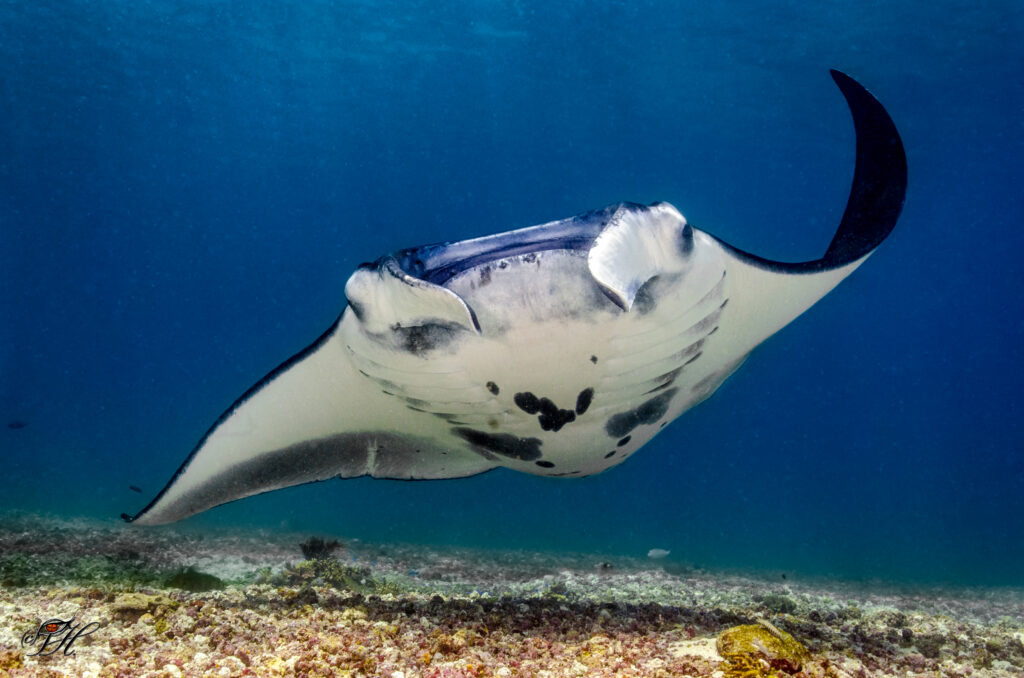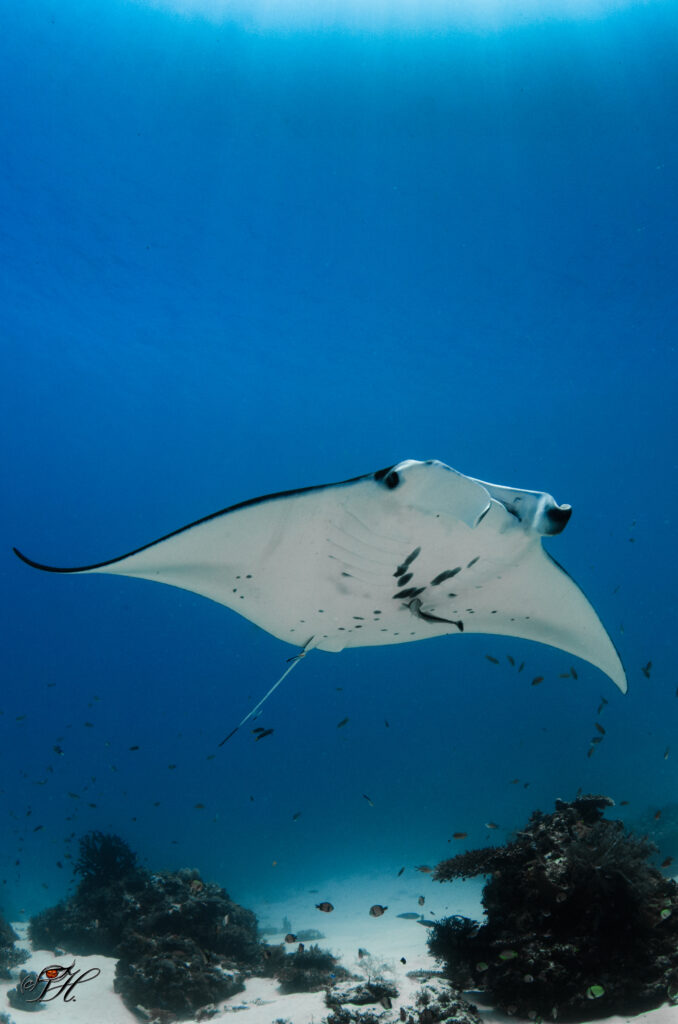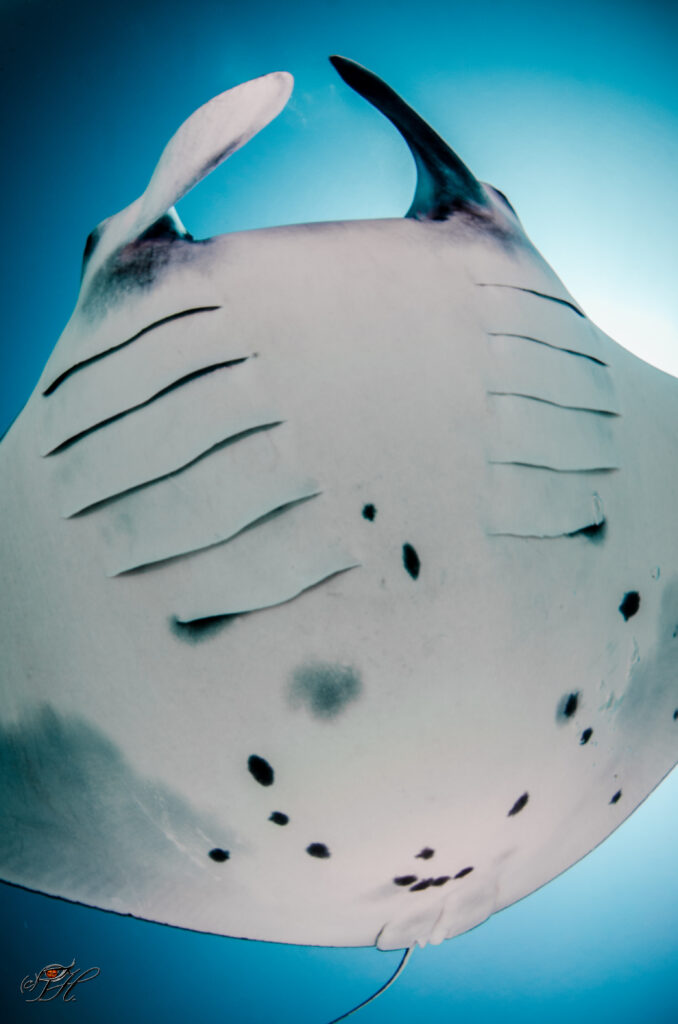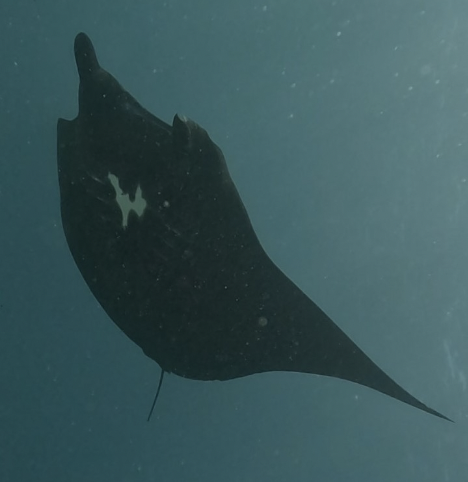Menu

The Mantas of Komodo National Park are a popular reason to visit this incredible area! They love to hang out in the waters surrounding Komodo and our resident population continues to grow year on year!

Mantas are part of the Eslamobranch Family. This is the same family as sharks and skates and is due to their cartilaginous skeletons. Sharks have been around for over 500 million years while this younger relative has only been around for about 5 million years.
Mantas are actually formally called Mobulids and were officially renamed a couple of years ago, but for us they will always be Mantas!!
These graceful animals are smart too! They have the largest brain of all fish making them highly intelligent creatures. Studies have been conducted using mirrors in what is called a Mirror Self-Recognition Test (MSR). This is used to see if an animal is self aware. Cats & dogs for example don’t recognise their own reflection and act as if they are meeting another cat or dog! Other animals that have ‘passed’ the MSR tests are dolphins, elephants and primates. MSR is tricky underwater, but mantas have excellent vision compared to other fish.
When studied in front of a mirror mantas have been seen to spend more time in front of the mirrors than in other areas and they were observed to perform repetitive and unusual behaviours that is known as “contingency checking” in other words – checking themselves out! They do not respond to their reflection as if there is another buddy around. Like primates & elephants they are thought to be able to recognise themselves. Self-awareness / self recognition is a fundamental factor when determining intelligence in animals.

These flying giants live a life of perpetual motion – meaning they always keep moving. They must constantly keep swimming over the course of their lifetime. In fact, the only time they stop swimming (briefly) is during copulation (sexual activity). Mantas are very heavy with the biggest known specimen weighing 2 tonnes! So when they stops swimming they are negatively buoyant and will start to sink.
There are 2 types. (A potential third kind is currently being studied by scientists, but yet to be formally announced).
Here in Komodo we get the Manta Alfredi or Reef Manta. These are the smaller of the two, but can still grow very big with an average wingspan of 4 metres! Reef Mantas prefer shallow reef waters and can be easily identified by the belly spots between their gill slits.
The second kind is the Manta Birostris or Oceanic! These are HUGE with an average wingspan of 8 metres and are more commonly found in deeper waters in places such as the Galapagos and Socorro Islands, but they are also commonly seen in Raja Ampat. Oceanics can be identified by their huge size, but also by their belly spots which are found outside of their gill slits.
Here in Komodo we have a resident population of just over 1200 Alfredi individuals. These individuals have all been uniquely identified by their belly spots.

Did you know every manta has unique spot patterns on their bellies, which is just like the human fingerprint. These patterns are what is used to identify and track individuals. This is why citizen science and photos / videos are so so important. Scientists use this information to identify, track and monitor individuals and populations.
Manta Matcher is a fantastic online resource where you can upload your images of different manta bellies & the information will be added to the database to help track the different individuals.
So far there have been over 12,500 individuals identified using Manta Matcher.
Here in Komodo we have our own adopted manta called Gizmo! Gizmo is melanistic (or ninja!!) and was first identified in August 2011. Gizmo has been regularly seen over the years cruising around Mawan and Karang Makassar in Komodo. She is not thought to travel much further than Komodo and seems to be a like spending her time around here! The last time Gizmo was formally identified was in 2023 so perhaps you can help us find her again this year!!

Over at Scuba Junkie Penida they also have adopted an individual called – Mola The Manta. Mola the Manta, like Gizmo, is also melanistic and was first identified in March 2014.

These melanistic beauties are still Manta Alfredi or Reef Mantas. The Melanism is a genetic colour morph that results in a “switch” of colours. Melanistics are commonly referred to as Ninjas and are a really special sight to see!! The darkness of the black is like nothing you will see! Ninjas make up about 10% of the populations in Komodo and Penida so make sure to keep your eyes peeled next time you visit us.
Mantas can be seen in Komodo all year around with them being seen in bigger numbers at dive sites such as Karang Makassar (Manta Point – not to be confused with the dive site at Nusa Penida), Mawan and Manta Alley. If you really want to increase your chances of seeing these magnificent giants in big numbers the best time to visit is September – October & January – April. These are the months when the seasons are changing and they can often be seen feeding, cleaning and mating around the central dive sites! They can still be seen throughout the rest of the year, but usually in smaller numbers.
If you would like to find out more about the best time to visit us if you are looking for your megafauna fix then please get in touch here.

